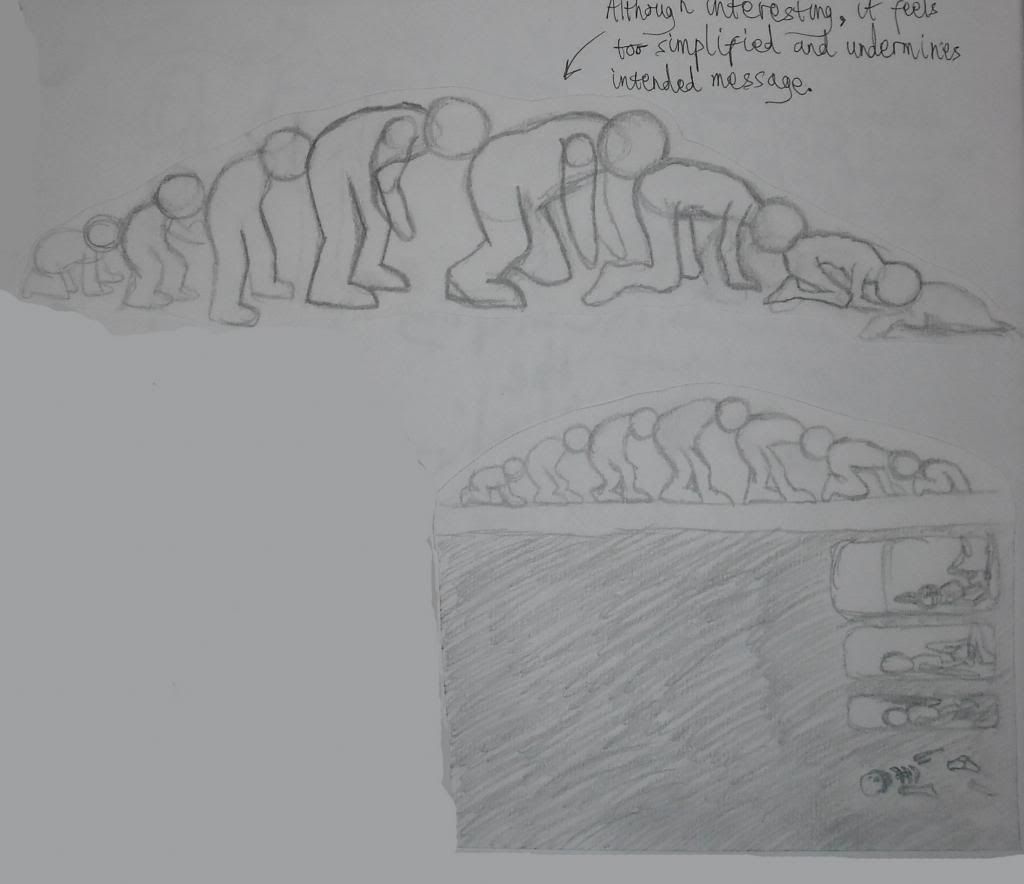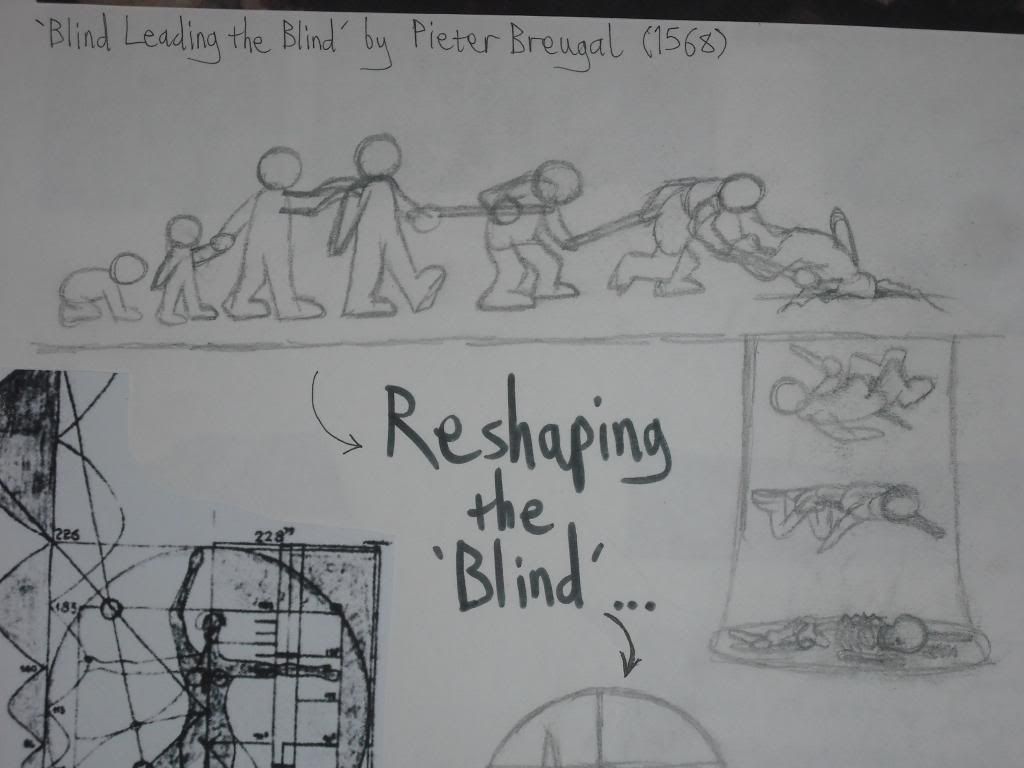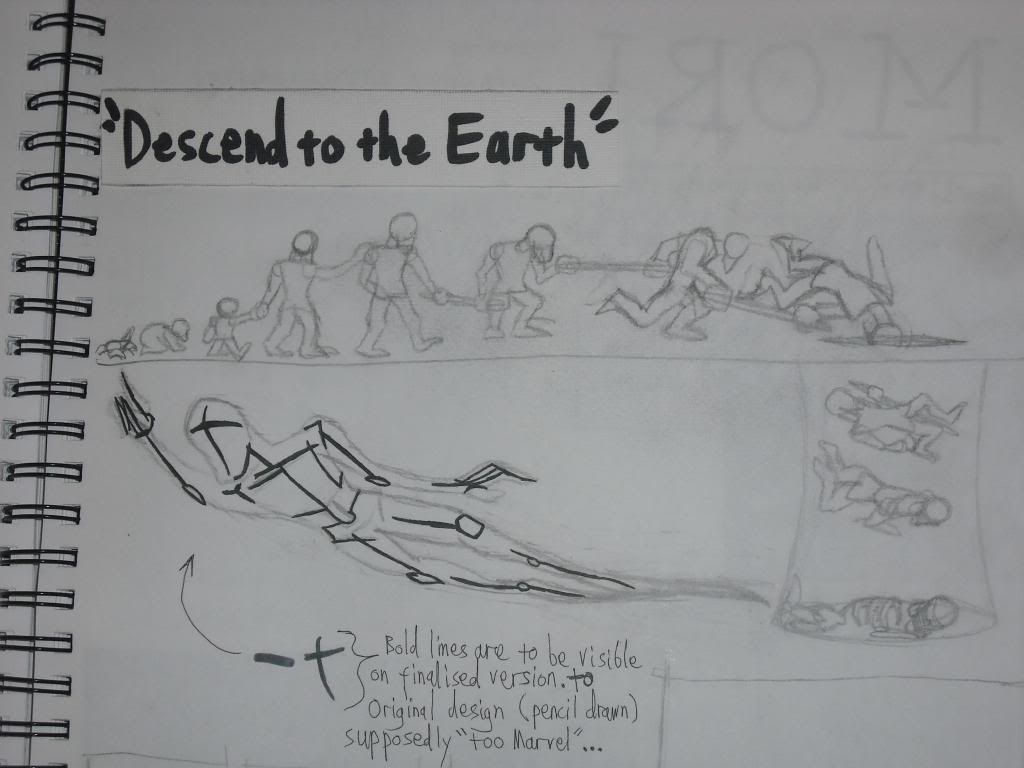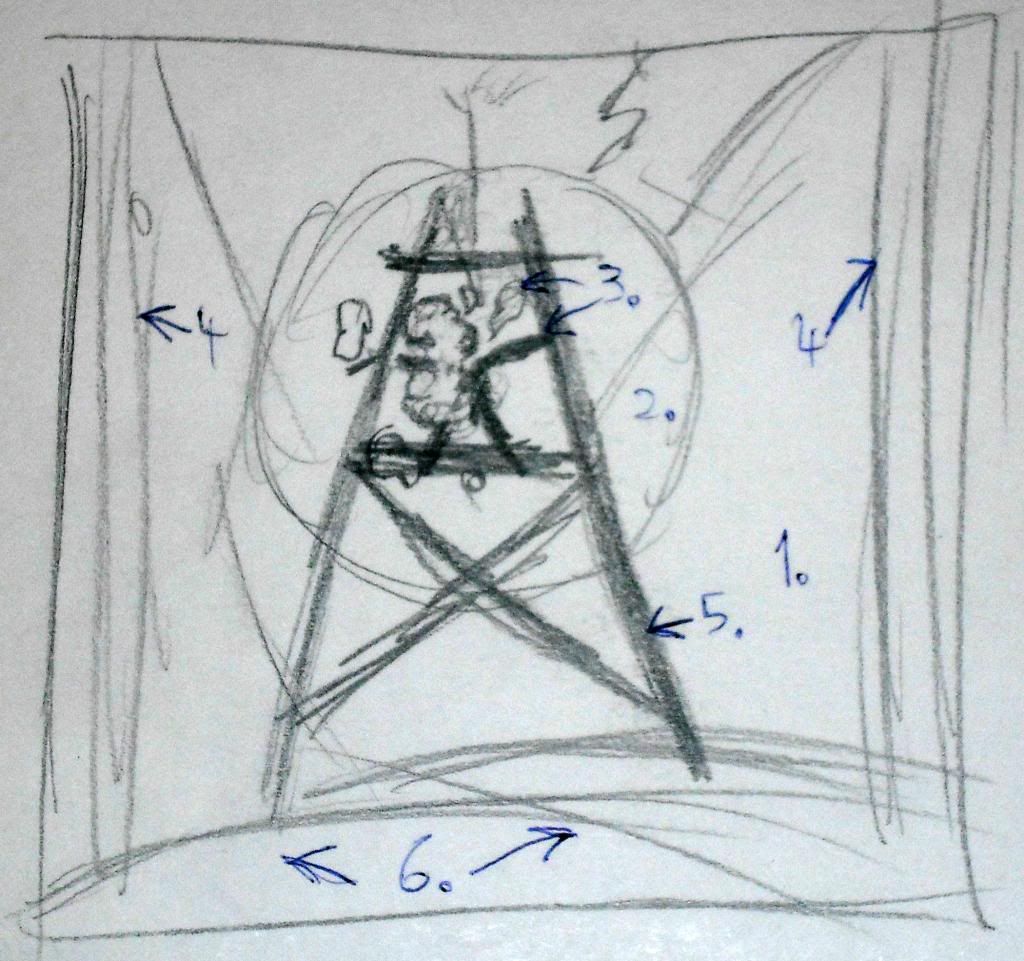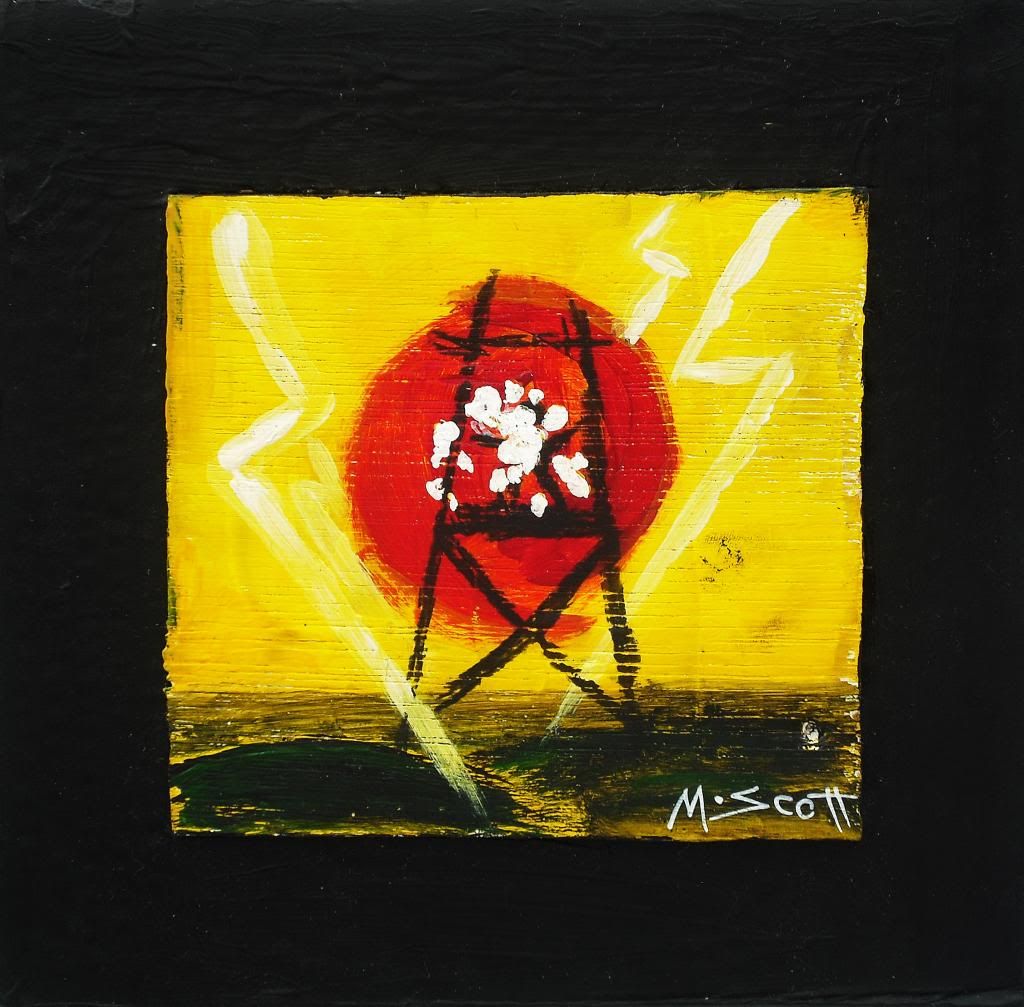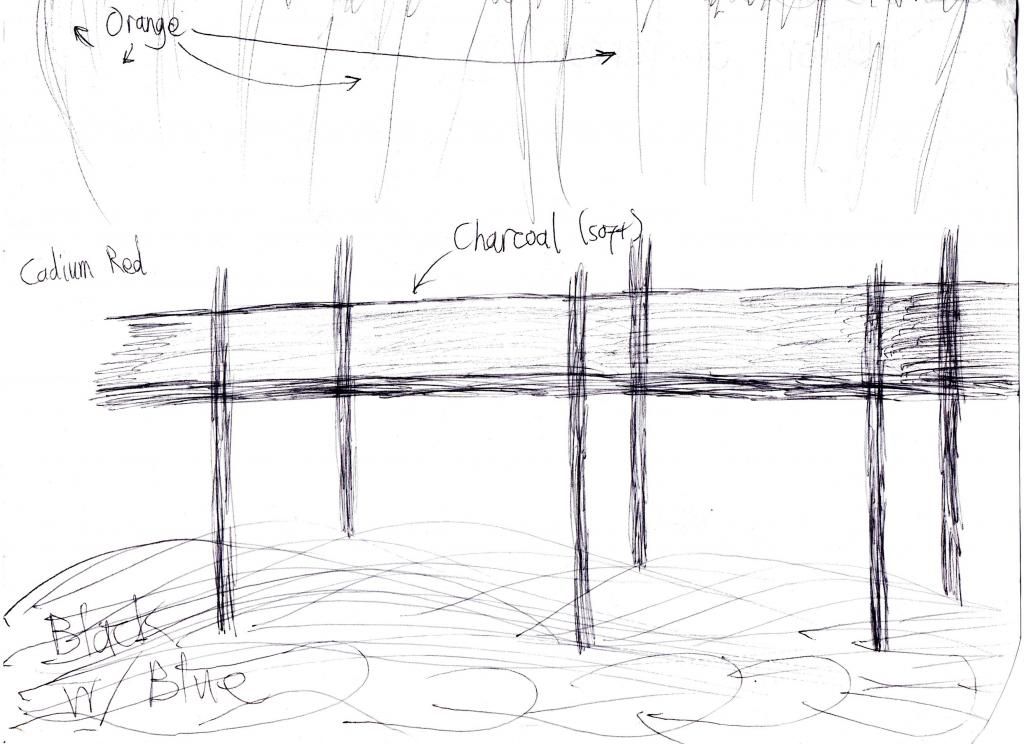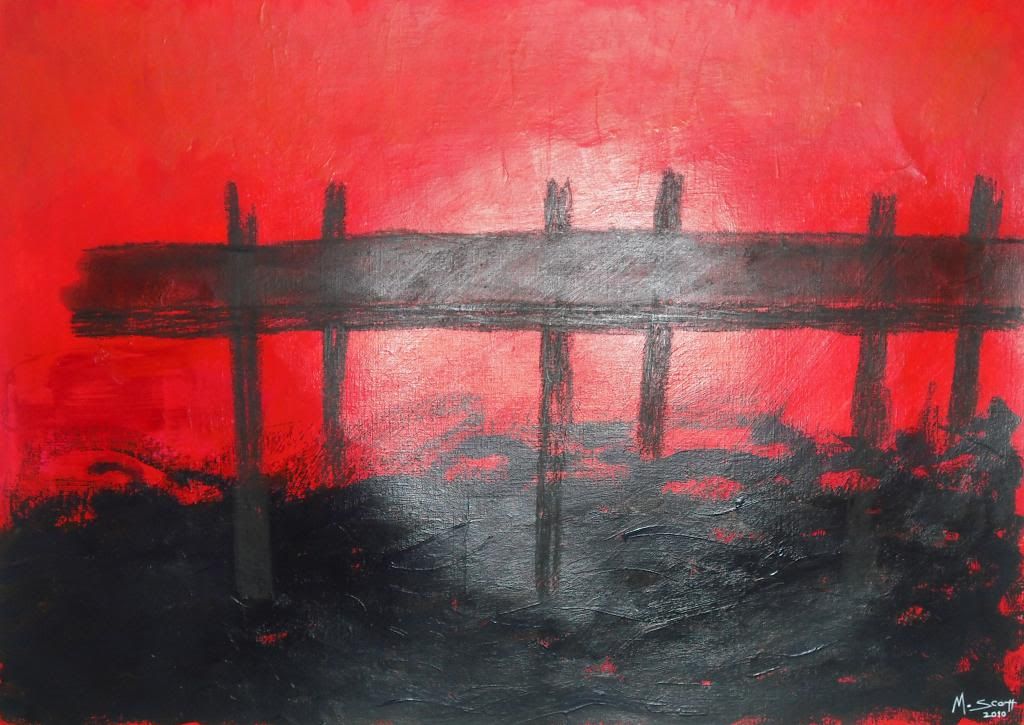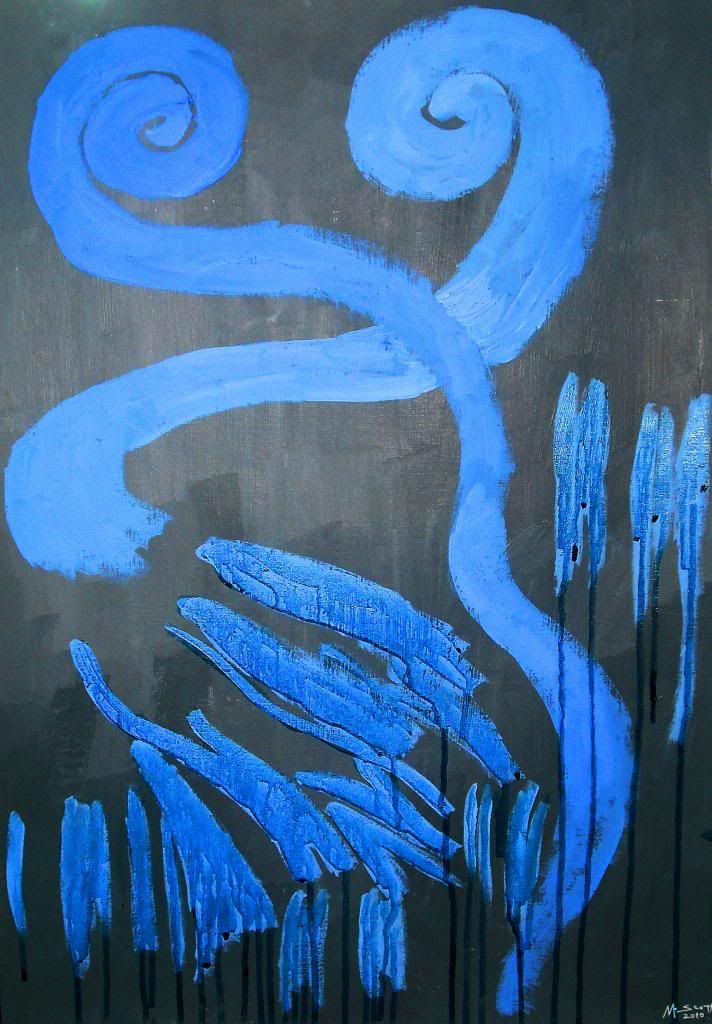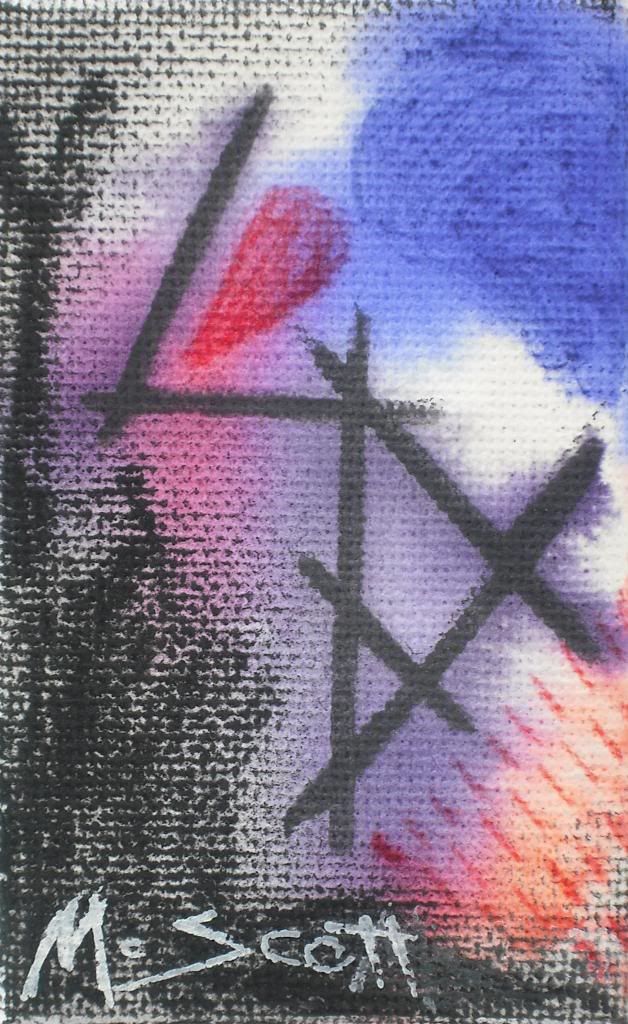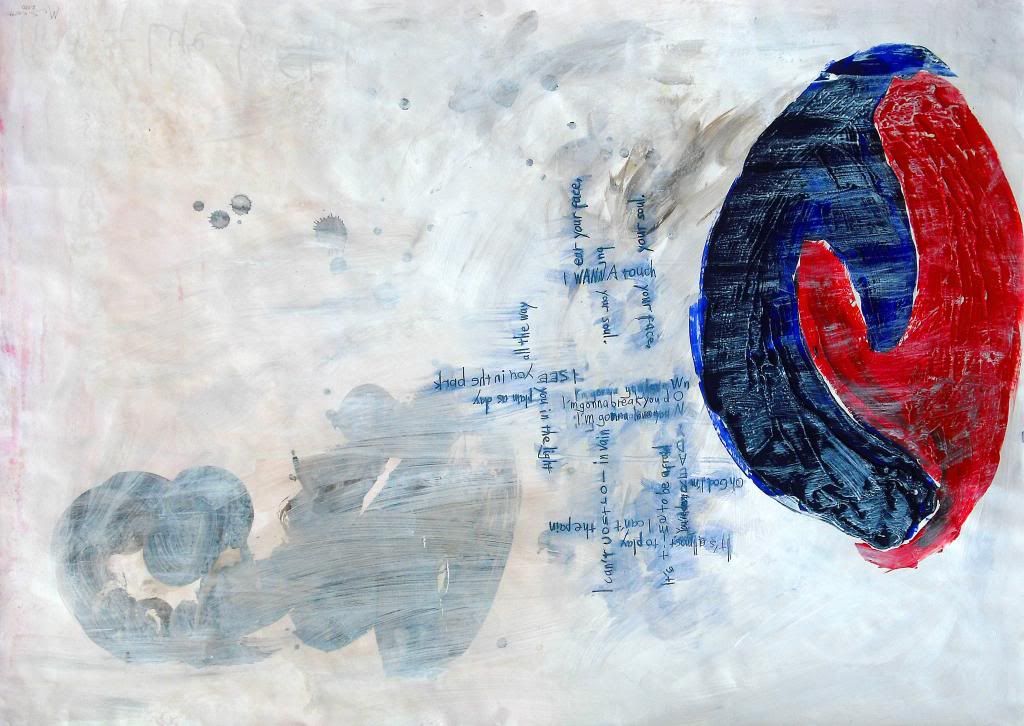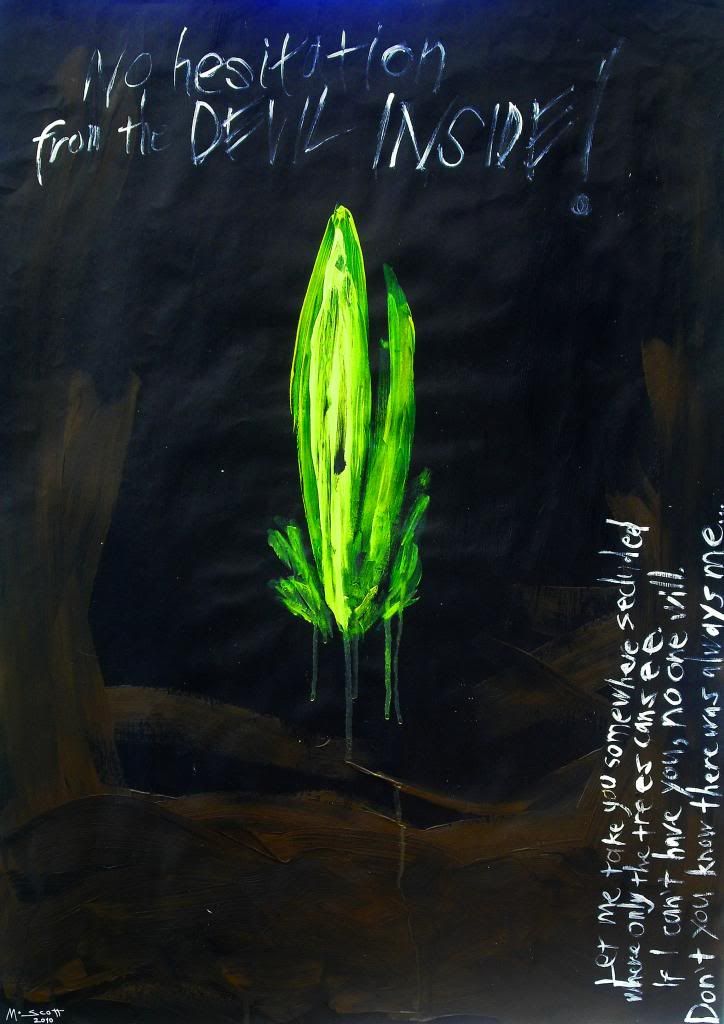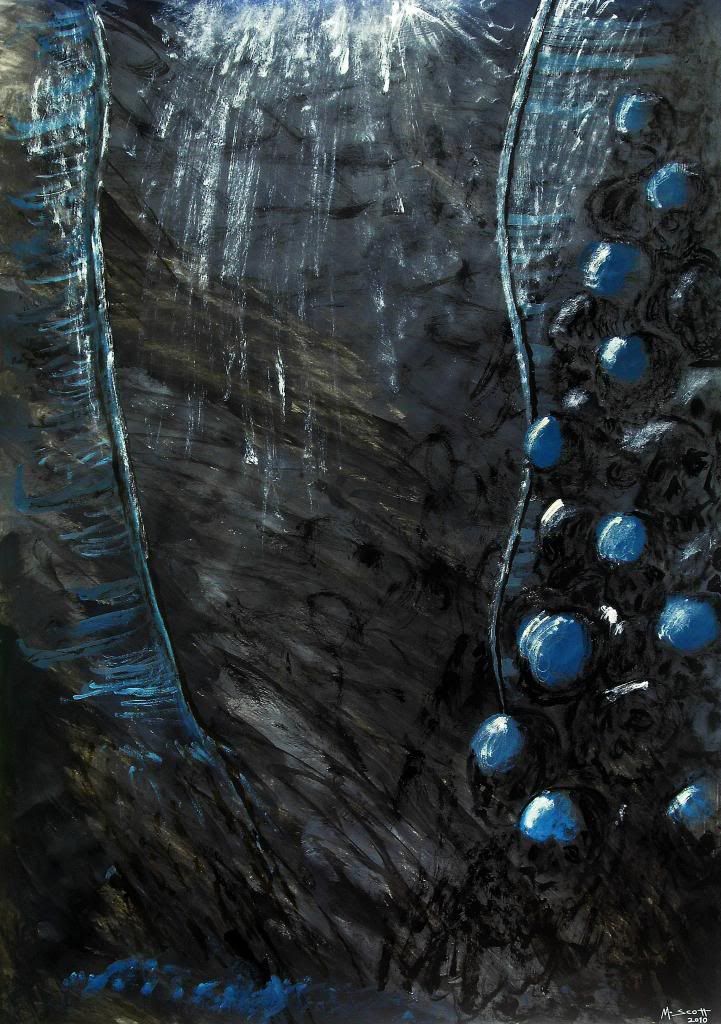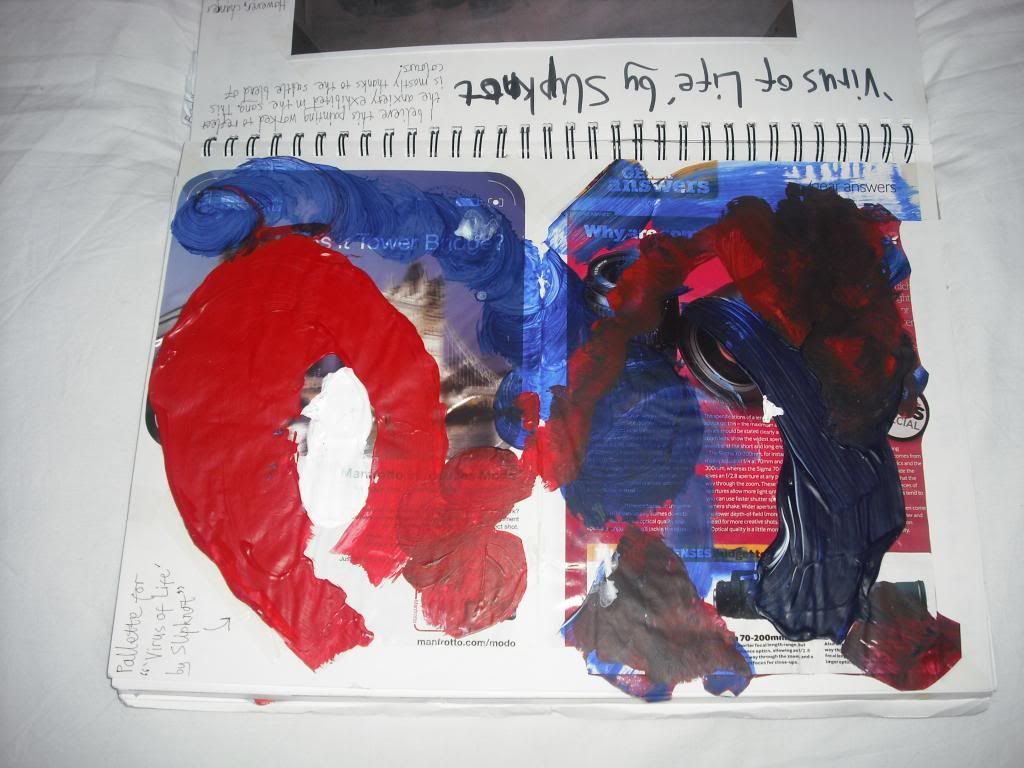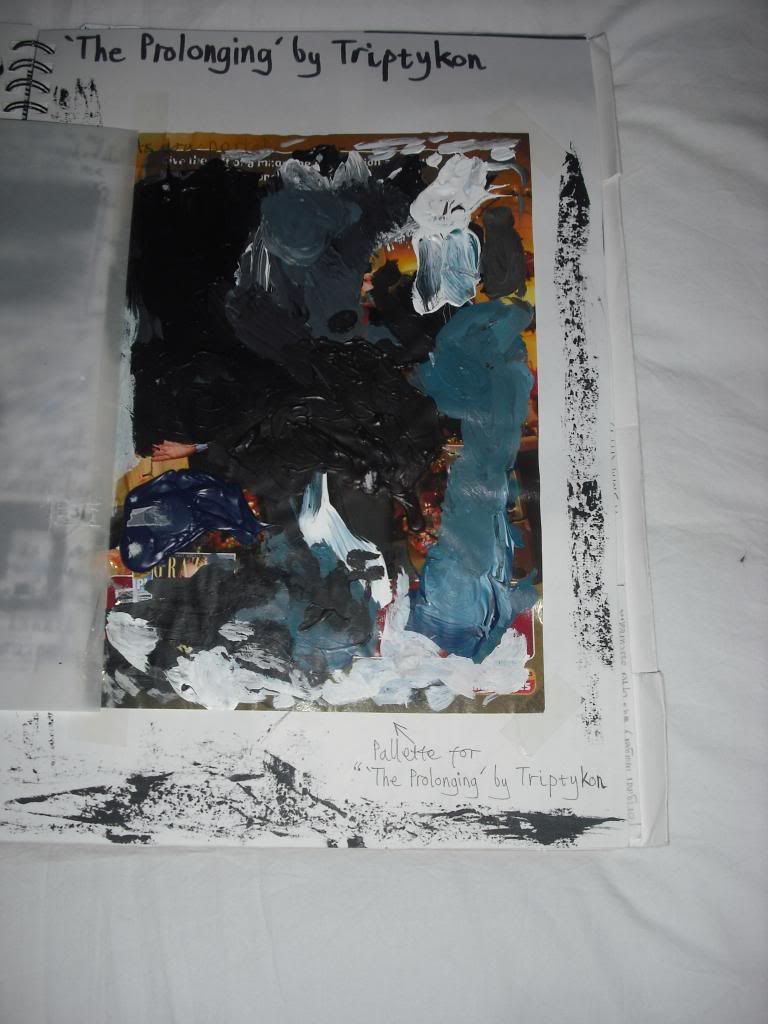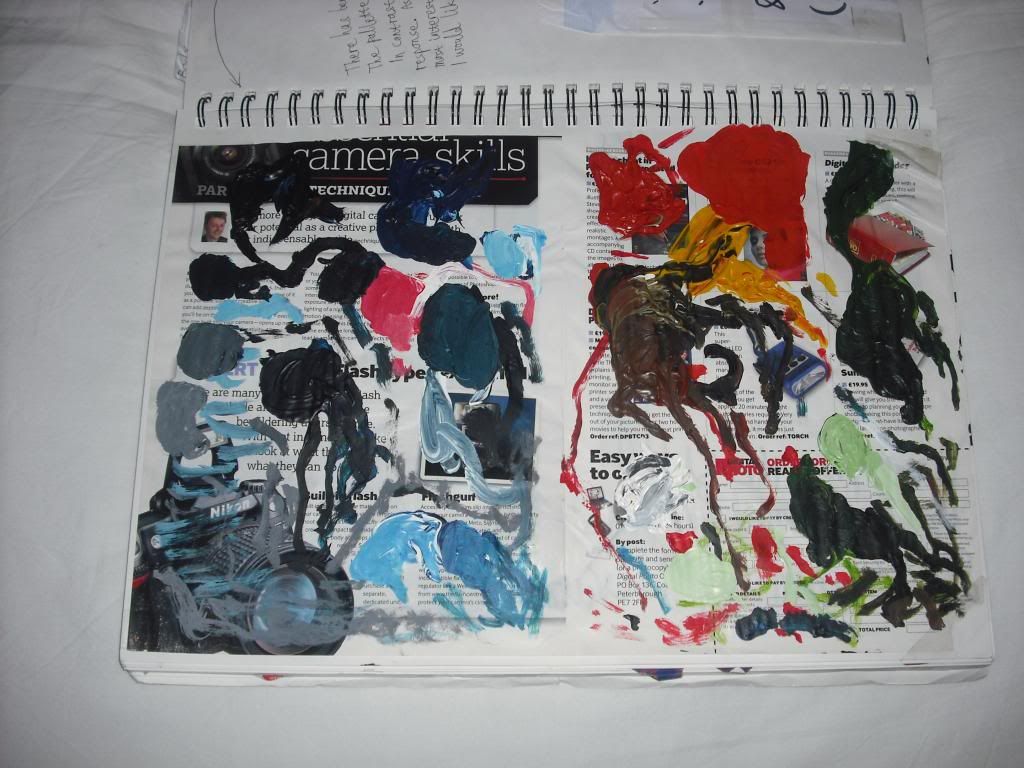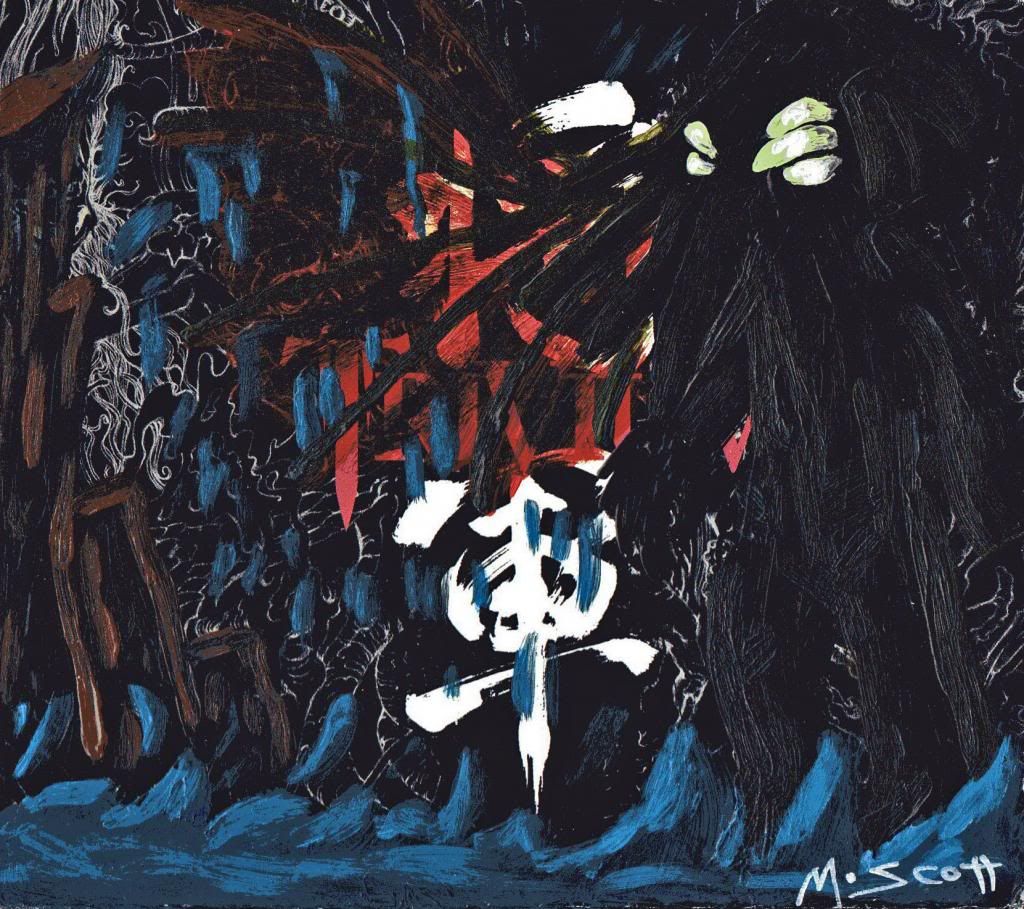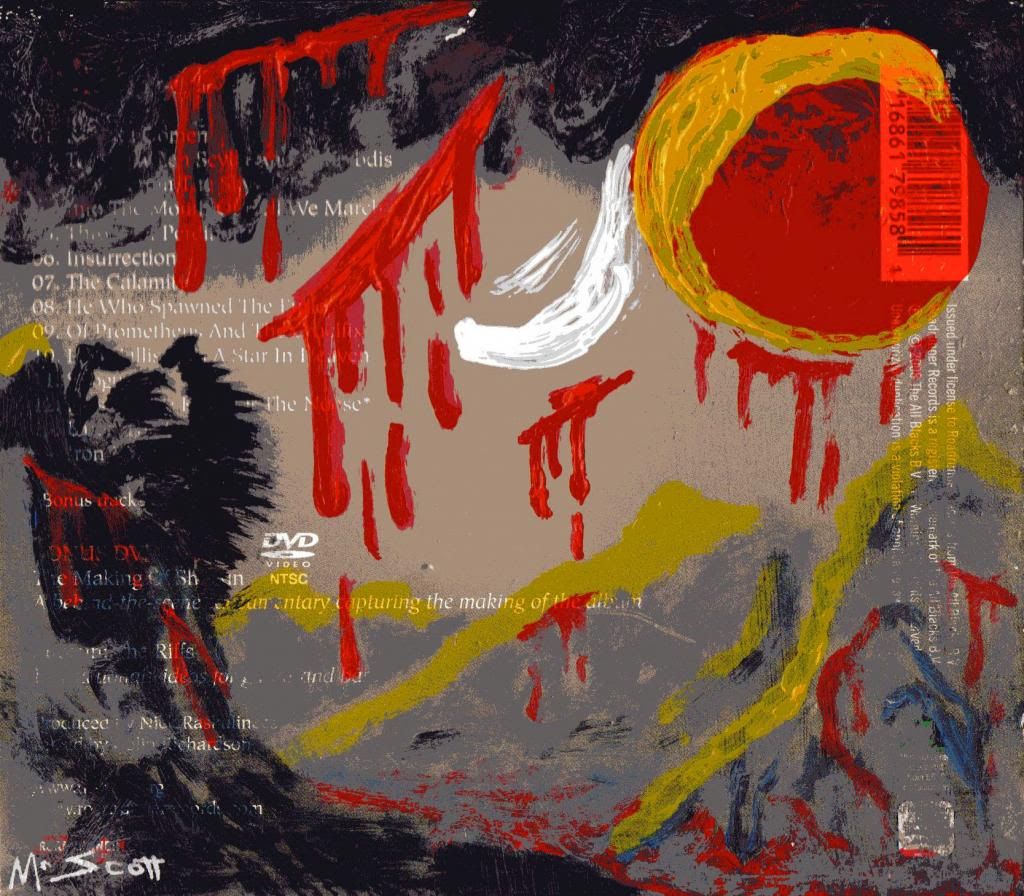I considered indirectly adapting the overused image of the evolution of man and applying the similar image to the inevitability of death, originally by connecting the depicted figures together in a segmented fashion as one rises from the ground, increases in size and returns to the earth as it once came from. My original sketches for this idea were very much simplified in form and felt all too simple to the point they risked undermining the main idea. Initial visual aesthetics were inspired by the frequently featured figures in works by Keith Haring.
Designs 1 & 2 of sculptural piece
Because of my concerns over the form of the piece and a need to enforce the idea, I looked for some potential references that could parallel it. Fortunately, one of my tutors first suggested a figure named the 'Modulor Man', a concpet developed by architect Le Corbusier. The Modulor Man, following a similar premise to Da Vinci's Vitruvian Man, attempted to develop architecture through measurements of the human body (anthropometry) while applying modern mathematics. This brings forth (albeit unintentionally) an utopian quality from Corbusier's figure.
Design 3 of sculptural piece
"Death needed to occur to the utopian form"
To further emphasise on the allegorical nature of this piece, I looked to Pieter Breugel's Blind Leading the Blind (1568). The time that this painting was made happened to also be within a time period when memento mori artwork was prevalent, Pieter even being a major contributor to such works.
Final design for sculptural piece
By the time I had produced my final design, I had considered a title for the final piece, 'Descend to the Earth'. I wanted the title to have a similar 'commanding' nature in its wording as memento mori has arguably held as an expression (often translated as "remember to die").
